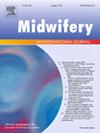Women's experiences and needs in the use of digital technologies for the management of gestational diabetes: An integrative systematic review
IF 2.5
3区 医学
Q1 NURSING
引用次数: 0
Abstract
Introduction
Gestational diabetes mellitus (GDM) represents a widespread complication occurring during pregnancy, posing potential risks to both expectant mothers and their babies. Evidence shows that digital technologies provide comparable levels of care to conventional methods for GDM self-management, which help to improve maternal and neonatal outcomes. This systematic review aimed to explore women's experiences in using digital technologies, inform future technology design for gestational diabetes and potentially help improve usability.
Methods
An integrative systematic review including quantitative, qualitative and mixed-method studies. The search was conducted in five databases including CINAHL, Web of Science, Medline, Embase, and PsycInfo. Studies were eligible when including the experience of using digital technologies for GDM self-management from the women's perspective. The screening processes were conducted by two independent reviewers and reached an overall moderate agreement on inter-rater reliability. Quality appraisal was conducted using the Mixed Method Appraisal Tool version 2018.
Results
Thirty peer-reviewed articles were included, with a predominant or partial focus on five types of digital technologies including mobile applications, virtual care services, webpages, digital devices, and online communities. Women's experiences and needs of using GDM digital technologies were synthesised into five overarching themes: (1) sufficient and straightforward GDM-relevant educational information; (2) advanced personalisation and broader commitments in coaching components; (3) easy data recording and advanced data visualisation in data management; (4) improved healthcare professionals’ engagement; (5) development of online community interfaces.
Conclusion
This integrative systematic review gives information on the types of available features across technologies and specific preferences for features by women with GDM. According to the inferred gaps, efforts should be made to facilitate women's self-monitoring using data and feedback, provide personalised information corresponding to women's condition, meet different behaviour change needs using customised coaching features, and enable wider access to information and support.
妇女在使用数字技术管理妊娠糖尿病方面的经验和需求:一项综合系统综述。
妊娠期糖尿病(GDM)是妊娠期普遍发生的并发症,对孕妇和婴儿都有潜在的风险。有证据表明,数字技术为GDM自我管理提供了与传统方法相当的护理水平,有助于改善孕产妇和新生儿结局。本系统综述旨在探讨女性使用数字技术的经验,为妊娠糖尿病的未来技术设计提供信息,并可能有助于提高可用性。方法:综合系统综述,包括定量、定性和混合方法研究。检索在CINAHL、Web of Science、Medline、Embase和PsycInfo等5个数据库中进行。当包括从妇女角度使用数字技术进行GDM自我管理的经验时,研究是合格的。筛选过程由两名独立的审查员进行,并在评估者之间的可靠性方面达成了总体适度的一致。质量评估使用2018版混合方法评估工具进行。结果:纳入了30篇同行评议的文章,主要或部分关注五种类型的数字技术,包括移动应用程序、虚拟护理服务、网页、数字设备和在线社区。妇女使用GDM数字技术的经验和需求被综合为五个总体主题:(1)充分和直接的GDM相关教育信息;(2)高级个性化和更广泛的培训内容承诺;(3)方便的数据记录和先进的数据可视化管理;(4)提高医护人员的敬业度;(5)开发在线社区接口。结论:这一综合系统综述提供了GDM女性在不同技术中可获得的特征类型和特定偏好的信息。根据推断的差距,应努力利用数据和反馈促进妇女的自我监测,提供与妇女情况相对应的个性化信息,利用定制的指导功能满足不同的行为改变需求,并使更多的人能够获得信息和支持。
本文章由计算机程序翻译,如有差异,请以英文原文为准。
求助全文
约1分钟内获得全文
求助全文
来源期刊

Midwifery
医学-护理
CiteScore
4.50
自引率
7.40%
发文量
221
审稿时长
13.4 weeks
期刊介绍:
Midwifery publishes the latest peer reviewed international research to inform the safety, quality, outcomes and experiences of pregnancy, birth and maternity care for childbearing women, their babies and families. The journal’s publications support midwives and maternity care providers to explore and develop their knowledge, skills and attitudes informed by best available evidence.
Midwifery provides an international, interdisciplinary forum for the publication, dissemination and discussion of advances in evidence, controversies and current research, and promotes continuing education through publication of systematic and other scholarly reviews and updates. Midwifery articles cover the cultural, clinical, psycho-social, sociological, epidemiological, education, managerial, workforce, organizational and technological areas of practice in preconception, maternal and infant care.
The journal welcomes the highest quality scholarly research that employs rigorous methodology. Midwifery is a leading international journal in midwifery and maternal health with a current impact factor of 1.861 (© Thomson Reuters Journal Citation Reports 2016) and employs a double-blind peer review process.
 求助内容:
求助内容: 应助结果提醒方式:
应助结果提醒方式:


